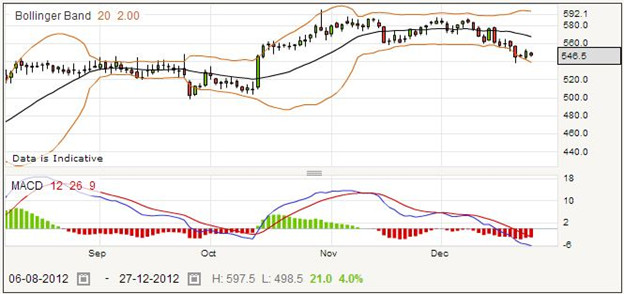Filtrona is a leading supplier of specialist plastic, fibre, and foam products, which are sold in a market of 29 countries. The daily price chart below shows moderate volatility with some trending, making this a relatively safe spread betting prospect.

The company was started as a fibre division of Bunzl, a distribution and outsourcing company headquartered in London, back in the 1940s. It expanded its scope by buying Moss Plastics in 1955, MSI Oilfield Products in 1994, and Payne in 1996, bring into the company fold plastic products, pipe protection, and self adhesive tapes, respectively.
The fibre division of Bunzl took over Filtrona Corporation, a US filter specialist, in 1997, and adopted the Filtrona name. Filtrona went on to buy Enitor and Skiffy Group, both structured businesses involved with plastics and nylon. It was spun off from Bunzl in 2005, then acquiring Duraco, an American adhesive coating manufacturer, and Lendell Manufacturing, a foam manufacturer. This put together the variety of expertise that the modern-day Filtrona company now trades on.
Because of its diversity and worldwide customer base, the price chart for Filtrona which you can see above appears relatively stable. Certainly the price dipped during the global economic recession down to around 100, but since then there has been significant growth. The high previously to the recession was less than 400, and despite the appearances above, there has been steady progress in the last few years.
Because of this, it is likely that the downturn that you see on the right-hand side of the chart is simply a retracement in the overall progress. You need to develop your own trading strategies that respond to your trading period and the type of stocks that you choose to look at. Make sure that you have thoroughly tested them, using at least a few years of recent historical information to check on the performance.
Filtrona Rolling Daily
The current daily rolling quotation for Filtrona is 548.6 – 551.4. You must make your own judgment on which direction you believe the stock price will head, but perhaps you believe that the downward retracement will continue over the next few days, and decide to place a short bet on this stock. Say you stake £20 per point.
It may work out for you. The price may go down to 529.9 – 532.7, and you may decide to close the bet and collect your winnings. The bet was opened at the selling price of 548.6. You closed the bet at 532.7. 548.6 minus 532.7 is 15.9 points. As you chose to stake £20 per point, this would amount to a win of £318.
Often, however, you will be faced with a losing position and will need to close your bet for a loss, in order to avoid any further losses. This is quite normal, even for successful traders, as no one can reliably predict the markets. Say the price goes up to 557.95 – 560.75, and you close your trade. The bet was opened at 548.6, and you closed it at 560.75. That means you have lost 560.75-548.6 points, which is 12.15 points. Multiplying this by £20, your loss amounts to £243.
Many spread betters use a stop loss order to help them close losing trades as quickly as possible. Your spread betting provider will close the trade when it hits a level that you set, and you do not need to be watching the markets to give him an additional instruction. Perhaps this would close at 554.21 – 557.01 when you used a stop loss order. This time you have lost 557.01 less 548.60 points, which is 8.41 points. For your chosen bet size of £20 per point, you would have lost £168.20.
Filtrona Quarterly Futures
If you want to take a slightly longer view of the market, you could take out a futures style bet, which generally works out better if you may hold a trade open for a few weeks or months. The current quote for the far quarter is 550.6 – 557.3. Perhaps you would stake £12 per point on a long bet, hoping that the price will go up.
If the price goes up, you may choose to take your profit when the quote reaches 578.65 – 585.35. Your long bet closes on the selling price of 578.65, having opened on the buying price of 557.30. That means that you have gained 578.65 minus 557.3 points, which is 21.35 points. With a stake of £12 per point, that amounts to a win of £256.20.
When you take a loss, it should amount to less than the potential profit for the bet. That way, even if you only win as often as you lose you will still be making a profit overall. Suppose the price went down to 541.25 – 547.95, and you closed the bet to accept the loss. Your bet was opened at 557.3. It closed at 541.25. That means you have lost 16.05 points. You chose to stake £12 per point, so your losses turn out to be £192.60.
Many spread betters use a stop loss order, which saves them watching the markets all the time. Your spread betting provider will take care of closing the trade if and when it reaches the price that you have instructed. In this case, perhaps a stop loss order would close your bet when the price was 544.99 – 551.69. The bet would have closed at 544.99, down from the opening price of 557.3. That means that your point loss is 12.31. At £12 per point, this is a loss of £147.72.